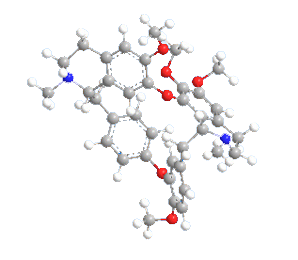
Tetrandrine is an alkaloid that was isolated from the root of the Asian herb Stephania tetrandra by H. Kando and K. Yano in 1932. It is a constituent of the Chinese herbal drug han-fang-chi that is used as an analgesic and antipyretic.
Tetrandrine is a calcium channel blocker that is currently being developed as an Ebola drug. R. A. Davey at the Texas Biomedical Research Institute (San Antonio) suspected that calcium signaling is crucial to the ebolavirus infection process. He and researchers around the world showed that two-pore calcium channel 2 is the key signaling pathway. Tetrandrine may be more effective as a prophylactic treatment than as a drug for the active disease, but it has many hurdles to overcome before it is approved for commercial use.

Learn more about this molecule from CAS, the most authoritative and comprehensive source for chemical information.
Molecule of the Week needs your suggestions!
If your favorite molecule is not in our archive, please send us a message. The molecule can be notable for its current or historical importance or for any quirky reason. Thank you!
Stay Ahead of the Chemistry Curve
Learn how ACS can help you stay ahead in the world of chemistry.

